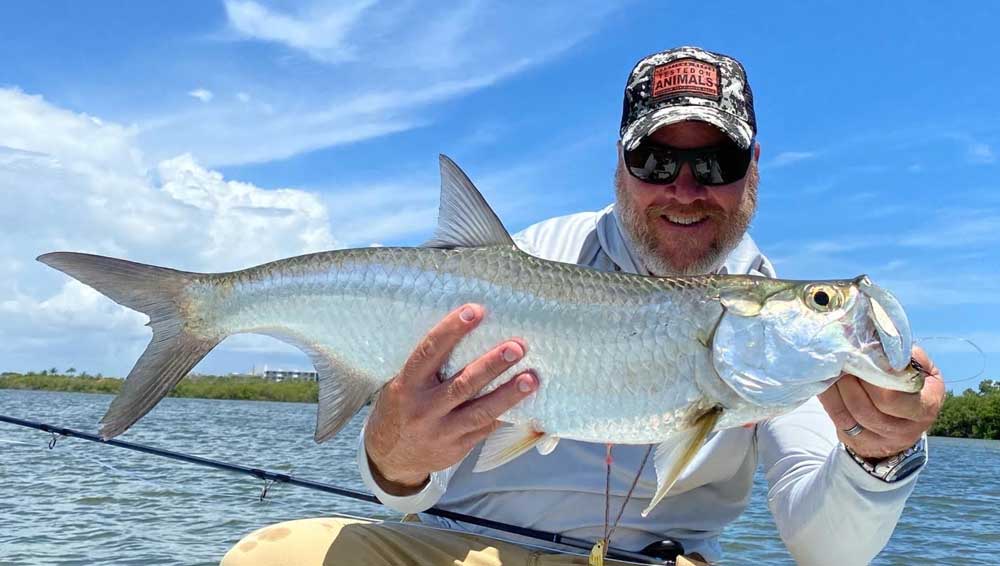
Summertime on the inshore flats of East Central Florida can offer some of the best angling on fly to be found if you take the correct approach. Usually, this entails beginning your day very early to key in on what is usually the best time of day to find fish feeding. I myself will usually try to time my arrival to my designated fishing area before or just as the morning sun starts to break the horizon. The water is usually at it’s coolest temps and fish may not be quite as sluggish and more willing to eat. The best results are obtained throwing some type of top water pattern to draw fish in to striking. My favorite has always been a “Gurgler” in various colors. My “go-to’s” colors are usually a black or tan but either seems to work as well as the other. Gurgler eats can be pretty intense, especially for Tarpon and Snook. I specifically target ambush points such as points or pockets on the mangrove shorelines or even open water around schools of bait.
As the sun begins to rise and temps heat up, I’ll usually switch up to some type of sub surface pattern or even a weighted fly to slow the presentation down even more. This time of year, the most predominant forage for game fish are Mullet of all sizes, Glass Minnows, Pogeys, etc. The best approach is utilizing a pattern that closely resembles the type and size of baitfish in the area. The fly does not need to necessarily look exactly like a baitfish, but size and color are usually key. Tarpon and Snook can sometimes prove to be a little more particular as they are normally keyed into a specific species when feeding and tend to ignore almost everything else you present to them. Trust me, I know from some very aggravating situations. Redfish, Trout, and Black Drum can be a little less finicky and with a little trial and error they tend to be a little more cooperative to take a variety of fly patterns.
One of the toughest aspects of angling during the summer months, whether on fly or spin gear, is trying to find clean or somewhat clear water. Not that fish won’t eat in dirtier water but trying to sight fish on fly with two to three inches of visibility, or less, can prove to be very challenging. Unfortunately, this time of year our inshore waters are also very prone to algae blooms. Not only can this effect visibility but also the amount of dissolved oxygen. When possible, I try to avoid areas of an active bloom as for the most part they will be void of fish.
And as always, wear UV protectant clothing or sunscreen and carry an abundant supply of hydration. Summertime can be challenging but also very rewarding.


Leave A Comment
You must be logged in to post a comment.